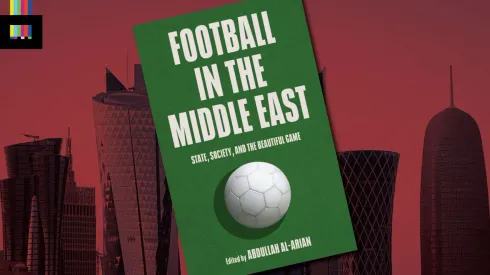Due to the myriad ethical, moral, and logistical issues, the 2022 World Cup left one very important question unanswered: was the World Cup an appropriate celebration of Middle Eastern soccer? Seeing Morocco advance to the semifinals and Saudi Arabia giving Argentina its only blemish suggested that, yes, the World Cup was a coming out for Middle Eastern and Northern African soccer. Yet did the glitz and glamor, the culture shown, really tell the story of the soccer tradition in the “birthplace of civilization”?
In some ways, yes, but it took the controversies and moral dilemmas to truly tell the tale. The oppression of certain people for the gain of others is as much a part of soccer tradition in the region as the sport serving as a source of pride. Ironically, Saudi Arabia being the region’s most successful team is itself an interesting twist considering geopolitical tension only five years ago threatened this very tournament from occurring.
Football in the Middle East
Professor Abdullah Al-Arian of Georgetown University in Qatar tries to tell this story in his collection of articles entitled, Football in the Middle East: State, Society, and the Beautiful Game. The book contains twelve articles on various elements of soccer in the Middle East and Northern Africa, written by different academics in different countries. From a hundred years ago up to the present day, the collection aims to give the reader a sense of how soccer has influenced society in this region of the world as well as address ongoing controversies.
The book jumps into various topics but tends to be heavy on a few topics. Palestinians and their exclusion from much of the organized soccer world has two articles, one about Lebanon and another about the BDS movement. Qatar, for obvious reasons, is another focus, with an article exclusively about the use of migrant labor and another about beIN SPORTS, its export to the soccer world and for a time a major player in the region for sports.
The book, however, also has some more niche topic articles that reveal much about societies in this region. Yagmar Nurat’s article on women’s soccer in Turkey is not surprising – discrimination is rampant worldwide – but the depth of research into the game and its impact on society is interesting. Similarly, Maher Mezahi’s article on the use of chants in the Algerian Hirak rings eerily similar to stories in Franklin Foer’s or David Goldblatt’s books on how the sport is an avenue for social change and protest.
Academic in presentation
What makes this book different from Foer’s, however, is how utterly dry it is. Each article is written by an academic so instead of a compelling narrative, we jump from one academic paper to another. Some, like Craig LaMay’s article on beIN SPORTS, was a compelling look at how a network we tend to forget in the West is a massive influence in Asia and Africa. Conversely, articles like Thomas Ross Griffin’s on national identity for Qatar’s national team is boring and beset with questionable benchmarks for making his argument.
Al-Arian might say that a book about the Middle East and soccer cannot be written by journalists because few journalists come from and live in the region, and those that do are usually dismissed by publishers. He says as much for the lack of research on the game by locals now. Whether this is true – and I suspect there’s definite truth there – does not take away from the fact that this book is slow and thick with academic talk.
If you can make it through it, you’ll learn much and realize there is a rich soccer history in the region, one that should be better explored and publicized. Making it through is a challenge, however, and only those soccer fans who are looking for something a little different than the usual and can handle pages of academic writing will benefit from this book.
Photo: Imago















